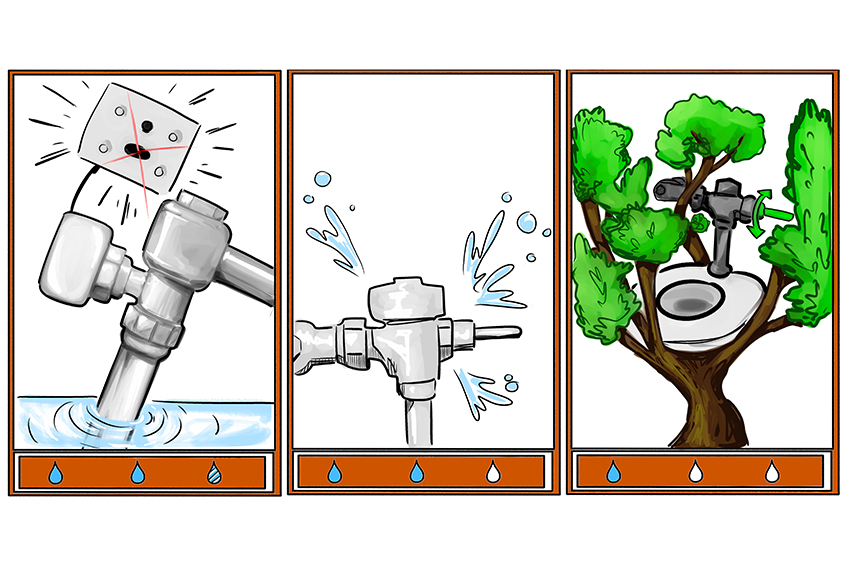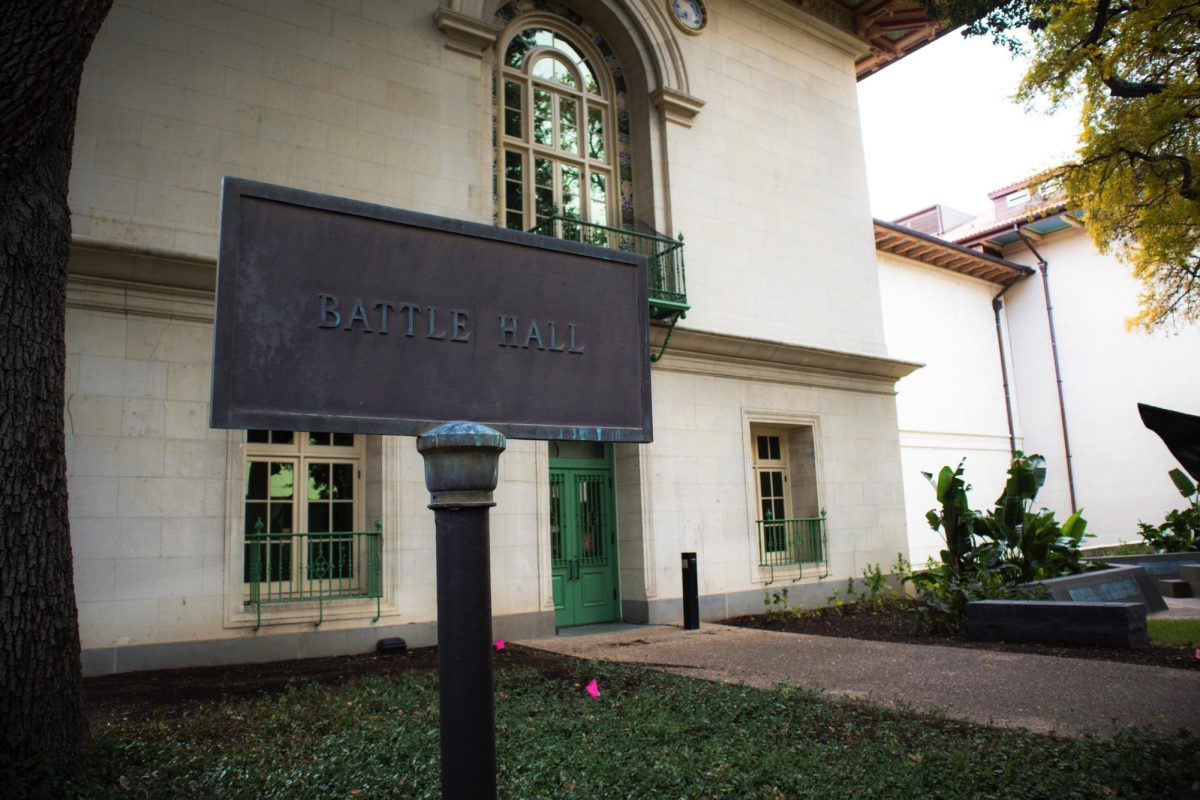Some students who use the automatic toilets in the Belo Media Center have noticed their motion sensors have a bit of a sensitivity issue.
“The toilet flushed four times and I only needed it to flush once,” public relations junior Emily Clohessy said. “I feel like it’s a waste of water, but there’s nothing I can do to control it. I don’t know what I’m supposed to do about it.”
This phenomenon is called the “phantom flush,” and is common with automatic toilets. It happens when the motion sensor that triggers the flush valve on the toilet malfunctions, causing it to flush multiple times per use. This can not only be annoying, but can potentially waste gallons and gallons of water.
Belo facilities manager Herbert Woerndell said he does not receive a lot of complaints about automatic toilets, but he does see the problems that arise with them.
“I prefer manual,” Woerndell said. “The cost to maintain them is a lot less, and you conserve more water with manual … flush. With an auto flush, if you move a certain way, they flush when they don’t need to. They fail more often.”
UT improved water conservation in campus restrooms in 2008 when it upgraded all of the toilets to a low-flow system that makes each flush use 1.2 gallons instead of the usual 1.6 gallons. This saves the University an average of 57 million gallons of water per year.
Even though automatic toilets and manual flush toilets both use the same amount of water per flush, automatic toilets still use 54 percent more water than their manual equivalents, according to a 2010 Maximum Performance Testing report by John Koeller, a Yorba Linda-based engineer and water efficiency expert, and his Toronto-based colleague Bill Gauley.
Pat Mazur, UT’s building energy and resource steward, said he usually recommends buildings use manual toilets because they are less expensive to maintain and fail less frequently, but automatic toilets are often preferred by building designers because they are seen as more accessible and sanitary.
“We have it in our standards to allow the automatic toilets in the event that someone is handicapped and they can’t reach the lever,” Mazur said. “That’s one reason. Another is that sometimes people don’t want to touch that part of the toilet, so there’s a sanitation aspect.”
Despite these issues, there is a way students can help water conservation efforts in the restroom. Mazur and Jim Walker, director of sustainability, said students should report phantom flushing toilets to Facilities Services.
“We all know that sustainability actions are driven by individual choice, individual action,” Walker said. “It’s the same with reporting toilets. People need to report to 512-471-2020 if there’s an electronic toilet that’s flushing two or three times. It’s a known issue, but we don’t have a clear strategy to focus on yet.”





















